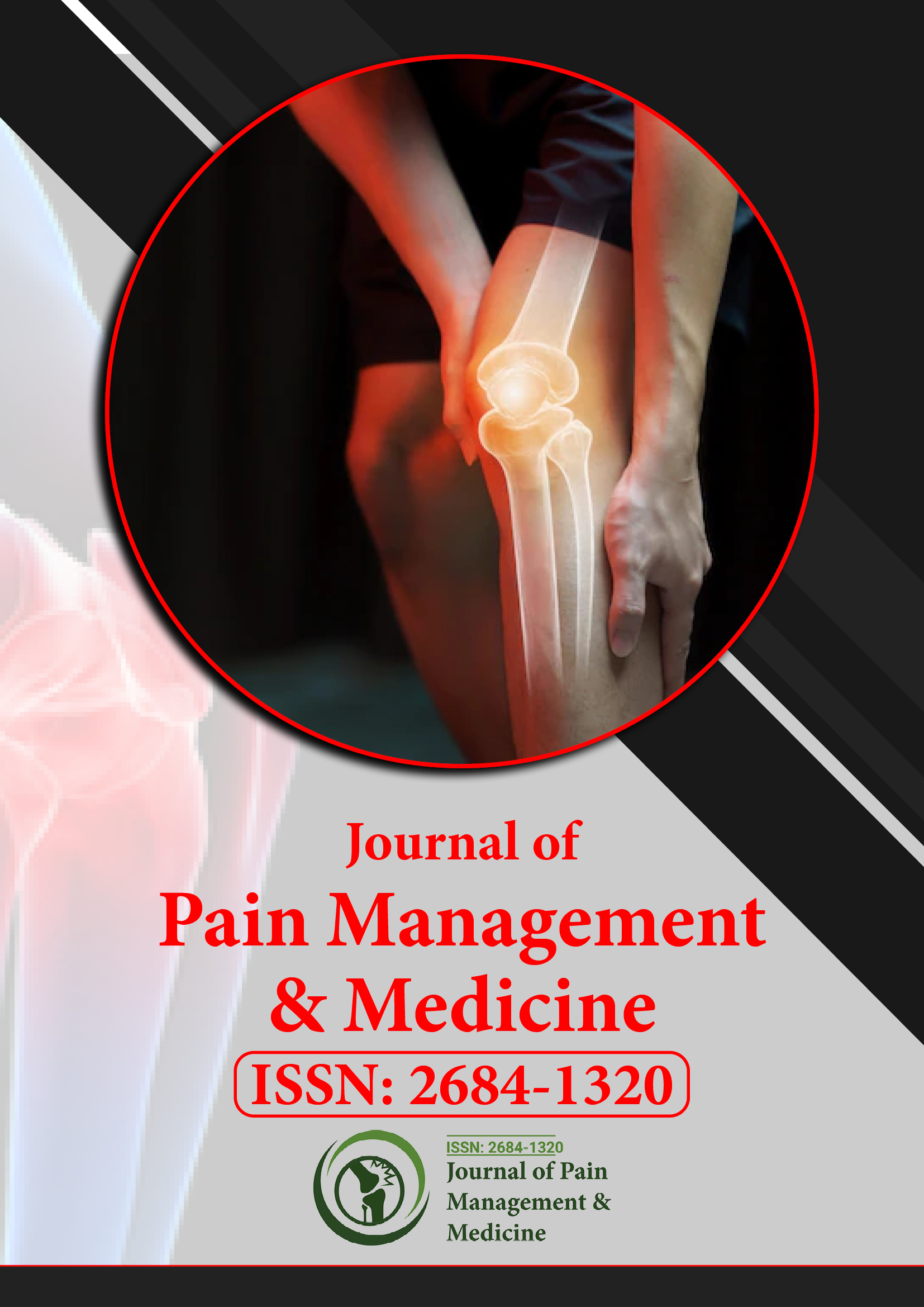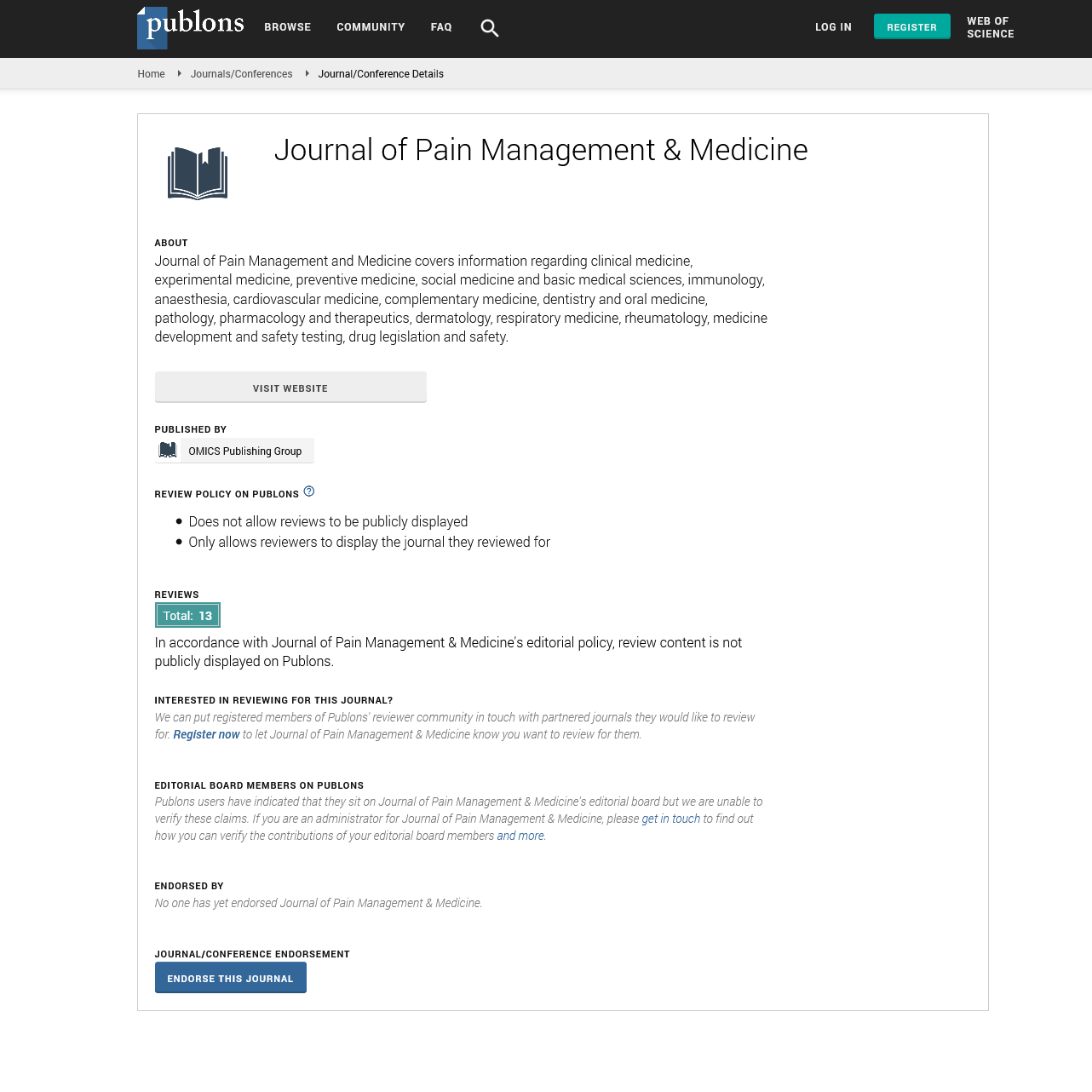Indexed In
- RefSeek
- Hamdard University
- EBSCO A-Z
- Publons
- Euro Pub
- Google Scholar
- Quality Open Access Market
Useful Links
Share This Page
Journal Flyer

Open Access Journals
- Agri and Aquaculture
- Biochemistry
- Bioinformatics & Systems Biology
- Business & Management
- Chemistry
- Clinical Sciences
- Engineering
- Food & Nutrition
- General Science
- Genetics & Molecular Biology
- Immunology & Microbiology
- Medical Sciences
- Neuroscience & Psychology
- Nursing & Health Care
- Pharmaceutical Sciences
Commentary Article - (2024) Volume 10, Issue 6
The Role of Inflammation in Chronic Pain: Causes and Implications
Liang Wang*Received: 28-Oct-2024, Manuscript No. JPMME-24-27639; Editor assigned: 30-Oct-2024, Pre QC No. JPMME-24-27639 (PQ); Reviewed: 13-Nov-2024, QC No. JPMME-24-27639; Revised: 20-Nov-2024, Manuscript No. JPMME-24-27639 (R); Published: 29-Nov-2024, DOI: 10.35248/2684-1320.24.10.303
Description
Inflammatory pain is a complex and frequently severe condition that develops from the body’s natural immune response to injury or illness. This type of pain, while initially protective, can become chronic and significantly impact quality of life. Inflammatory pain results from the activation of the immune system, typically in allergic reactions to tissue injury, infection or autoimmune processes. The body releases inflammatory mediators such as prostaglandins, cytokines and histamine, which sensitize nerve endings and amplify pain signals. While this response is intended to enhance healing, it can also lead to persistent discomfort, especially when inflammation becomes chronic. This pain is characteristics of various conditions, including arthritis, inflammatory bowel disease and certain infections. Unlike other types of pain, such as neuropathic or nociceptive pain, inflammatory pain usually involves prolonged activation of the immune system, creating a cycle of inflammation and discomfort.
Causes of inflammatory pain
Several conditions and factors can lead to inflammatory pain. Identifying these causes serves to assist with diagnosis and treatment. Bacterial infections or viral infections can cause inflammation as the immune system works to control pathogens. For example, dental abscesses and respiratory infections frequently involve inflammatory pain. Physical injuries, such as cuts, sprains or fractures, cause localized inflammation as part of the healing process. This can result in redness, swelling and pain in the affected area.
Conditions such as rheumatoid arthritis, lupus and multiple sclerosis involve the immune system improperly affecting healthy tissues, leading to chronic inflammation and pain. Inflammatory Bowel Disease (IBD), including Crohn's disease and ulcerative colitis, causes inflammation in the digestive tract, leading to severe abdominal pain and discomfort. Factors including smoking, obesity and a sedentary lifestyle can exacerbate inflammatory processes, increasing the risk of chronic pain.
Mechanisms of inflammatory pain
The development of inflammatory pain involves a sequence of biochemical and cellular processes. Injured tissues release chemicals include prostaglandins, bradykinin and cytokines, which activate pain receptors (nociceptors) in the affected area. These mediators increase the sensitivity of nociceptors, a process called peripheral sensitization. This amplifies pain signals sent to the brain.
White blood cells, including macrophages and neutrophils, migrate to the injury site, releasing more pro-inflammatory substances. This further contributes to pain and swelling. Chronic inflammation can lead to changes in the central nervous system, establishing it more responsive to pain signals. This phenomenon frequently determines the transition from acute to chronic inflammatory pain.
Symptoms of inflammatory pain
Inflammatory pain provides as a wide range of symptoms that frequently operate with the fundamental inflammatory condition. It includes: The affected area is usually sensitive to touch, with pain that worsens during movement or pressure. Inflammation causes fluid accumulation, leading to visible swelling around the site of injury or irritation. Increased blood flow to the infected area frequently results in redness. Jointrelated inflammatory pain, as seen in arthritis, generally causes stiffness, particularly after periods of inactivity. Chronic inflammatory conditions can lead to systemic symptoms such as fatigue, fever and a general emotion of the condition.
Diagnosis of inflammatory pain
Diagnosing inflammatory pain requires an in depth clinical evaluation to determine the underlying cause.
Medical history and physical examination: Healthcare providers assess symptoms, injury history and potential causes to determine the nature of the pain.
Imaging studies: X-rays, MRIs or ultrasounds can reveal structural abnormalities or inflammation in tissues and joints.
Laboratory tests: Blood tests measure signs of inflammation, such as C-reactive protein (CRP) and Erythrocyte Sedimentation Rate (ESR), can confirm the presence of an inflammatory process.
Specialized tests: For autoimmune disorders, specific tests including Antinuclear Antibody (ANA) or Rheumatoid Factor (RF) may be conducted.
Citation: Wang L (2024). The Role of Inflammation in Chronic Pain: Causes and Implications. J Pain Manage Med.10:303.
Copyright: © 2024 Wang L. This is an open access article distributed under the terms of the Creative Commons Attribution License, which permits unrestricted use, distribution and reproduction in any medium, provided the original author and source are credited.

